Vivo made its camera-related aspirations known with the X60 series that launched in early 2021. These were the brand’s first phones to showcase its partnership with storied camera tech brand Zeiss. The X60 Pro Plus, in particular, impressed us on the photography and videography front thanks to its novel micro-gimbal stabilization system and solid performance from the main and zoom cameras.
Yet, while it was a camera phone enthusiast’s dream, the X60 Pro Plus wasn’t perfect as an actual smartphone. It lacked wireless charging, an IP rating, and a QHD+ panel. These aren’t complete deal-breakers for more affordable phones, but Vivo was charging Rs 69,999 (~$950) for the device in India, putting it on par with full-fledged premium flagships from rival brands. And these rivals had all three features in tow, plus competitive cameras of their own.
Vivo is looking to solve all that with its successor, the Vivo X70 Pro Plus. Did the company learn from these previous missteps and fix where the older phone went wrong? Find out in this Vivo X70 Pro Plus review.
What you need to know about the X70 Pro Plus

- Vivo X70 Pro Plus (12GB/256GB): Rs 79,990 (~$1,077)
The Vivo X70 Pro Plus picks up where the X60 Pro Plus left off just over six months prior, supplanting it as Vivo’s flagship release for 2021. That means it’s running flagship silicon, has fast charging capabilities, and delivers a slick design. Unlike its predecessor, it also offers those aforementioned premium extras like a QHD+ screen, IP68 rating, and wireless charging.
The phone’s major selling point is still in the camera experience though. Vivo offers a similarly flexible camera system to the X60 Pro Plus, keeps the micro-gimbal stabilization system on the ultra-wide camera, and maintains the Zeiss partnership. It’s also a notable release for Vivo as it’s using an in-house imaging chip for the first time in company history, promising to reduce noise, improve efficiency, and more.
See also: The best Android phones
Vivo’s new premium flagship launched in China earlier this month alongside the X70 Pro and regular X70. It’s available in black, blue, and orange colorways. Those hoping for a more vibrant color option might be disappointed to find that only the black version seems to be available outside China. As for other markets, Vivo has confirmed that it’ll launch the X70 Pro Plus in India on September 30. We hope EMEA markets eventually get in on the action too, as the X60 Pro Plus was only available in China and India. US availability will almost certainly be a no-go, unless you fancy importing it, of course.
While there are other storage/RAM configurations in China, only the 12GB/256GB variant is available outside its home market. Otherwise, you’re getting a 66W charger, a USB cable, USB-C earbuds, a SIM ejector tool, and a plastic case in the box.
Design: Two steps forward, one step back
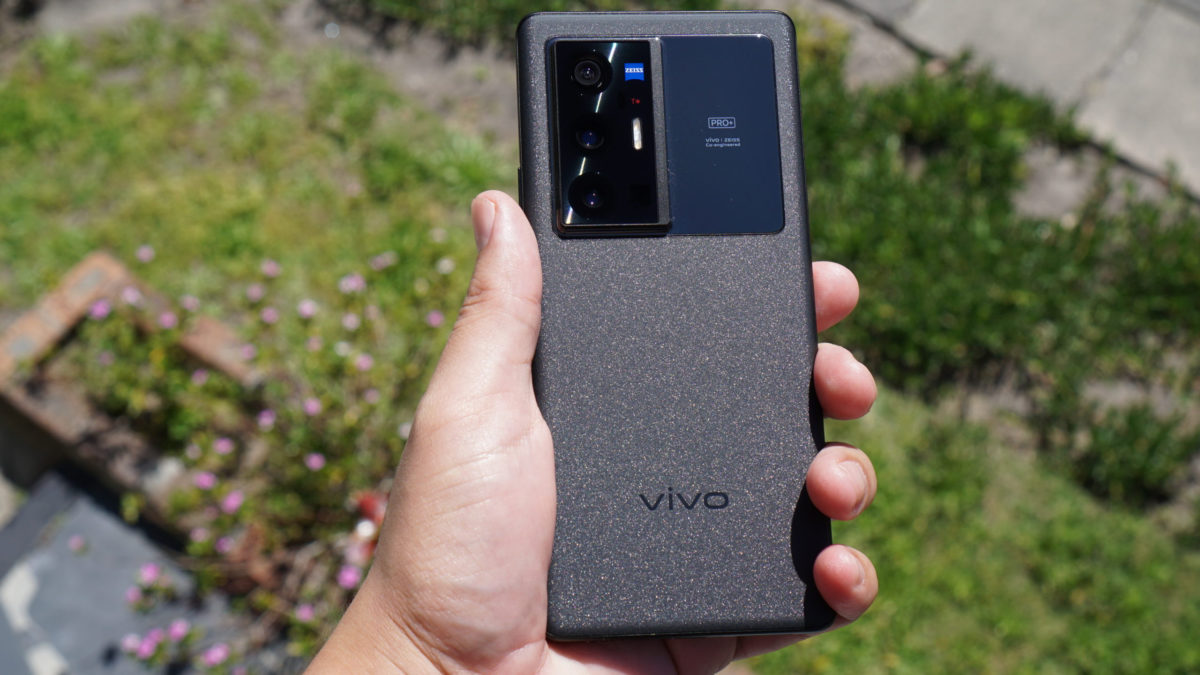
One of the first things you’ll notice about the X70 Pro Plus is its size. For reference, it’s slightly taller and wider than the already large Oppo Find X3 Pro and roughly the same height as and a little narrower than the Galaxy Note 20 Ultra, but it feels more ergonomic than Samsung’s phone. Nevertheless, it’s way bigger than the X60 Pro Plus and you’ll definitely find it’s a stretch to reach the top third of the screen if you’re like me and don’t have large hands.
I quite like alternatives to glass and plastic backs, so I’ll admit I was a little disappointed to hear that Vivo dropped the X60 Pro Plus’s faux leather rear cover. The company has instead opted for a so-called “Fluorite AG” glass back here. Vivo says this is a “crystallized glass with a prismatic surface,” and the end result is a glass back that doesn’t really feel like glass.
The Vivo X70 Pro Plus has a rather different, cool take on glass backs.
Instead, the phone’s black rear cover feels more like a matte finish, complete with a rubber Vivo logo. The best part is that you have to try really hard to leave fingerprint grease on the rear cover. However, the phone feels quite slippery, even when compared to other smooth glass-toting phones. Fortunately, Vivo includes a case in the box.
The rest of the phone is suitably premium, featuring Gorilla Glass Victus for the curved screen, a black metal frame that tapers on the left and right edges, and the power/volume rocker combo on the right-hand side. The top and bottom of the X70 Pro Plus are almost identical to its predecessor, including the somewhat weird “professional photography” branding we saw last time out. At least the actual text is a little smaller this time.
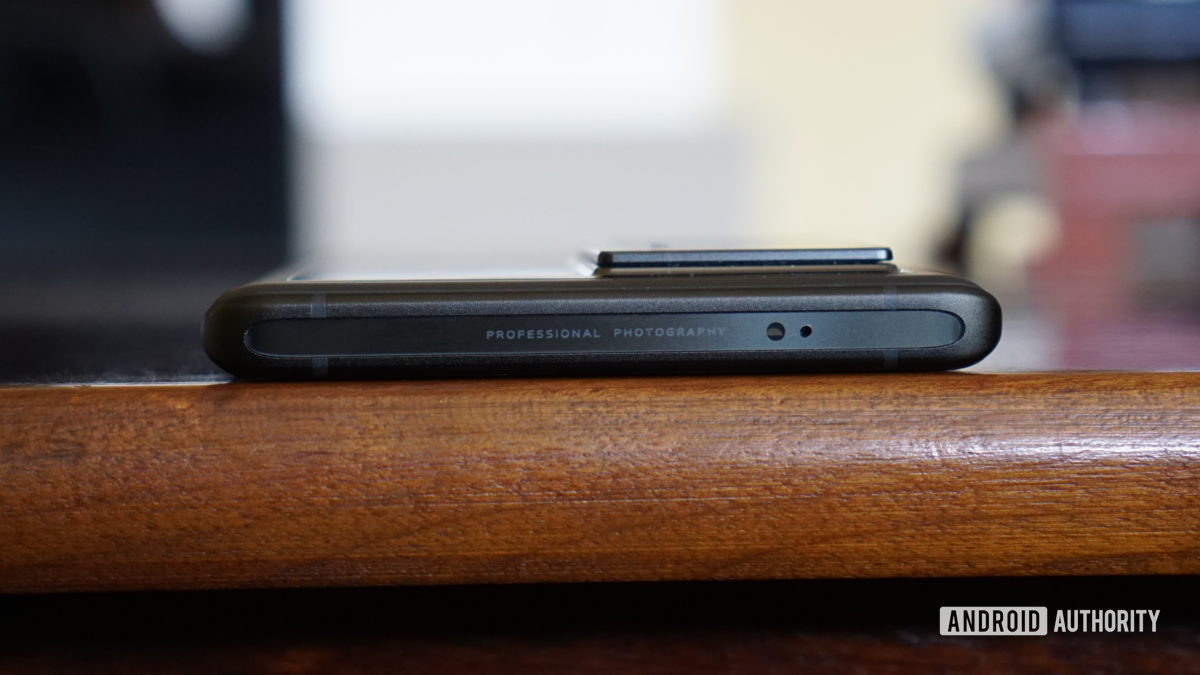
Perhaps the biggest change over the previous release is the camera housing, with Vivo opting for what is fundamentally the same housing but with a polished ceramic panel to the right of the camera bump itself. This is purely here for aesthetic purposes. The distorted reflection means it doesn’t make for a good mirror for selfies, as you might expect it to. In any case, I would’ve liked to see the company go for a horizontally arranged camera housing instead, ditching the panel in the process and reducing wobble when the phone is flat on a surface.
How about the cameras?
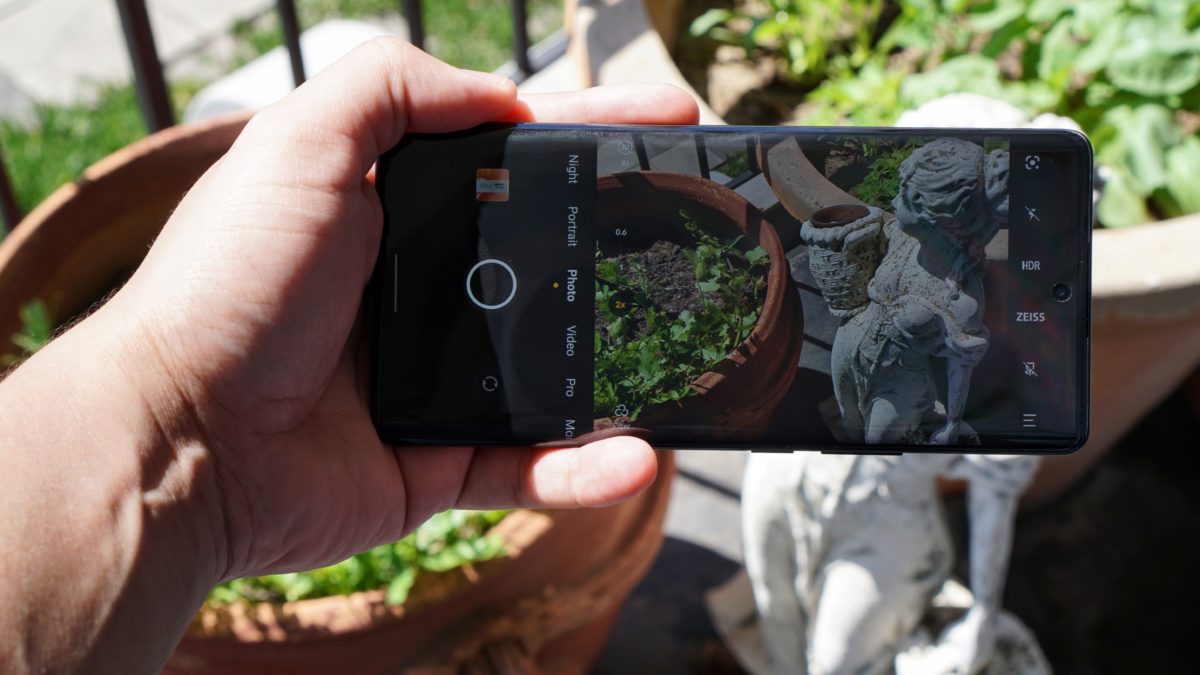
Vivo is offering a similar camera setup as the previous phone, but we do see the 32MP 2x telephoto camera being swapped out for a 12MP 2x shooter with OIS instead. Otherwise, we’ve still got that Samsung Isocell GN1 main camera, a 48MP IMX598 ultra-wide camera with micro-gimbal stabilization, and an 8MP 5x periscope lens. The company further claims that the use of high-transmittance glass lenses and Zeiss’s T* lens coating should result in reduced lens flare. Finally, the new phone brings a custom V1 imaging chip to reduce noise and improve efficiency.
Related: The best camera phones you can get
Images shot on the main camera generally offer a good balance between rich colors and realistic hues, never really going overboard during my time with the device. You can also expect some pleasantly wide dynamic range here, although pictures can be a little contrast-heavy and over-processed at times.
That large sensor size also results in a shallow depth of field here, which means you can get a decent level of background blur without needing to use the portrait mode. The downside is that you’ll need to occasionally step back a bit when taking close-up shots with the main shooter.
You can view the gallery of samples below or view the full-resolution images via our Google Drive link.
Vivo has also brought a few more Zeiss portrait modes to the table, and the portrait mode in general is pretty good. It’s not perfect, as it had a little trouble with the birdhouse in the background of the first portrait mode image above. My skin tone was also clearly different between the two sample shots, likely due to exposure or white balance differences. Still, portrait mode here offers results that don’t go overboard, and you can adjust the background blur after the fact too if you like.
One strange bug I noticed with the main camera is that on the odd occasion it churns out an image that’s full of noise. I’m not exactly sure why this happened, and it doesn’t seem to be occurring often enough to be a deal-breaking bug, but it’s definitely weird when the ultra-wide snap looks cleaner than the main camera shot. I did get an update halfway through the review process, but Vivo noted this only brought system stability fixes and touch sensitivity tweaks. Nevertheless, I haven’t been able to reproduce the issue since.
The X70 Pro Plus generally delivers great shots, but a little consistency and better long-range zoom would go a long way.
The ultra-wide camera isn’t quite as wide as the likes of the Galaxy S21 series or Mi 11 Ultra, but the 114-degree field of view is a little wider than devices like the Oppo Find X3 Pro and OnePlus 9 Pro. It is a step down from its predecessor, although fisheye distortion is generally kept in check here.
Color reproduction while using the ultra-wide camera isn’t bang-on compared to the main camera, but it’s pretty close, and dynamic range is similarly wide here too. This camera also does a good job in low-light conditions, but the gap between it and the main shooter becomes massive in extremely low light. Check out the comparison below.
 1x extremely low light bookshelf
1x extremely low light bookshelf1x extremely low light night mode bookshelf

 UW extreme low light bookshelf
UW extreme low light bookshelfUW extreme low light bookshelf night mode

My only major qualm with the ultra-wide is that macro shots can sometimes be a little finicky, with soft, bleeding edges and less detail than expected at times. Toggling the Super Macro option does help though, cropping in from the ultra-wide camera so you have a better look at the subject. And unlike Oppo and Apple’s phones, you can disable this cropping if you want.
The Vivo X70 Pro Plus brings two zoom-focused cameras to the table in the form of a 12MP 2x camera and an 8MP 5x shooter. One notable downside to these cameras is that both produce images that look noticeably different compared to the 1x and ultra-wide lenses, featuring far less vibrant colors. Whether it’s foliage, pets, or landscapes, the difference is immediately apparent.
The 2x camera manages to deliver a respectable level of detail nonetheless, while the 5x periscope shooter is also a decent performer but not much better than phones using hybrid zoom for shots at 5x or higher. You can zoom in up to 60x, but we wouldn’t recommend regularly heading past 10x as you’ll start to see some fringing, oil painting effects on elements like leaves, and a general lack of detail. While long-range shots are definitely not terrible, the likes of Samsung, Xiaomi, and Huawei have all stepped their game up.
Selfies on the X70 Pro Plus are pretty good too, capturing a good level of detail and wide dynamic range during the day. This means you can capture bright backgrounds without your face being dark as a result. In saying so, images from the front-facing camera can look a little washed out in particularly strong backlit scenes. There is a large drop in detail when taking selfies in mixed lighting, but Vivo offers a screen flash solution for this scenario.
The micro-gimbal system on the ultra-wide camera obviously helps enable much smoother video recording, but Vivo has also introduced a new stabilization feature here dubbed 360-degree Horizon Line Stabilization. This essentially keeps the video as level as possible while the phone is rotating.
This mode works quite well, and I was able to rotate the phone 360 degrees while recording (seen below). The mode also allows you to set the video’s orientation before you start recording, so the phone knows where the horizon is.
The Horizon Line mode UI also features a “rotate” button for determining whether landscape or portrait stabilization is needed. It does, however, seem like a bit of a missed opportunity to let you film landscape videos in portrait like the Moto One Action.
But the only real quibble I have with this new stabilization mode is the fact that it tops out at 1080p/30fps. This is a little disappointing when the Ultra Stable video mode (which uses a combo of micro-gimbal and EIS) tops out at 1080p/60fps. Panning in the Horizon Line mode also seems a little juddery compared to the Ultra Stable mode, although I’m not sure if that’s due to the higher frame rate with the Ultra Stable mode or if it’s horsepower-related. Ultimately, Horizon Line mode isn’t the go-to when you want to record a quick video, but it’s a cool addition anyway.
As for the Ultra Stable mode, the combo of great stabilization and 60fps makes for some smooth video, as we can see in the brief clip below. I’d definitely like to see the company offer 4K video in this mode, though.
Other notable camera modes here include Panorama mode, a Super Pano mode for HDR or low-light panoramas, a Super Night Video option, slow-motion (up to 1080p at 240fps or 720p at 480fps), Time-Lapse, Supermoon, Astro mode for astrophotography, Long Exposure functionality for light trails, and a Pro Sports mode for freezing fast-moving subjects. It’s clearly a stacked list of camera modes and features, but the Vivo camera app still manages to be pretty intuitive.
What’s it like to use the Vivo X70 Pro Plus?
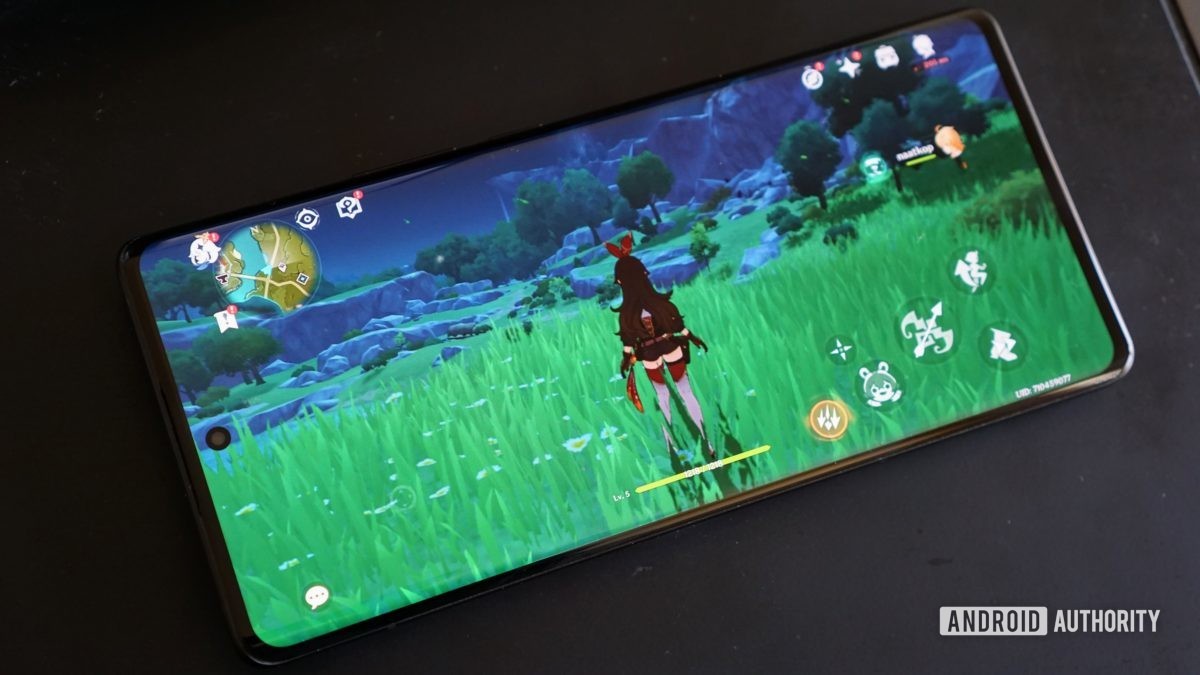
The Vivo X70 Pro Plus offers a cutting-edge combo in terms of pure specs with Qualcomm’s top-end Snapdragon 888 Plus chipset, 12GB RAM, and 256GB of fixed storage. Unsurprisingly, this translates pretty well to benchmarks, though not as world-beating as you might expect. Scores were generally on par with or a little worse than most Snapdragon 888-toting flagships.
Our own Speed Test G benchmark was completed in one minute and 23 seconds with the default power profile. That’s a fair bit slower than the OnePlus 9 Pro (1:15) and Xiaomi Mi 11 (1:12), and slightly slower than the Galaxy S21 Ultra (1:21). But it’s notably faster than the Oppo Find X3 Pro (1:30). Either way, these benchmarks are in the right ballpark, but what about actually using the phone?
One of the best ways to put mobile silicon to the test is to load up a few games, and I tried several titles. Advanced fare like Call of Duty Mobile and Genshin Impact delivered a smooth experience, with the latter in particular delivering fluid visuals — it’s definitely the smoothest I’ve seen Genshin Impact running on an Android phone. Emulators like Dolphin generally run well here too, although you will find the occasional bout of slowdown when playing more demanding games.
Related: The best Snapdragon 888 phones you can buy
The phone does get very warm during gameplay or when downloading a large update, but it wasn’t hot to the touch. In saying so, I ran two consecutive AnTuTu tests and noticed that the phone got quite hot after the second one, almost being too hot to hold to my cheek for a phone call. The phone didn’t get this hot while using the camera or gaming for extended periods, but it’s still worth noting.
Vivo’s device also ships with FunTouch OS 12 based on Android 11, and it’s not a bad take on Android. You’ve got the Google Discover feed on the left, a vertically scrolling app drawer, and a decent level of customization. Vivo’s nano widgets from its China-only Origin OS skin also make an appearance here, such as the nano music player and system clean-up tool.
On the downside, it doesn’t have the granular customization options of skins from other BBK brands like OnePlus and Oppo, The amount of bloatware here is quite a bummer, too. Boot up the phone and you’ll be greeted by the Amazon app, two shortcuts to Vivo’s app store, Netflix, Facebook, Spotify, a learning app, ShareChat, and the PhonePe payments app. You can uninstall almost all of them (although Facebook services can only be disabled).
FunTouch OS lacks the customization options of Color OS and Oxygen OS, and it’s saddled with some excess bloat.
Vivo has also promised that flagship phones launched after July 2021 will receive three years of OS updates. That should include the Vivo X70 Pro Plus, but we’ve contacted the company for clarification.
What about battery life?
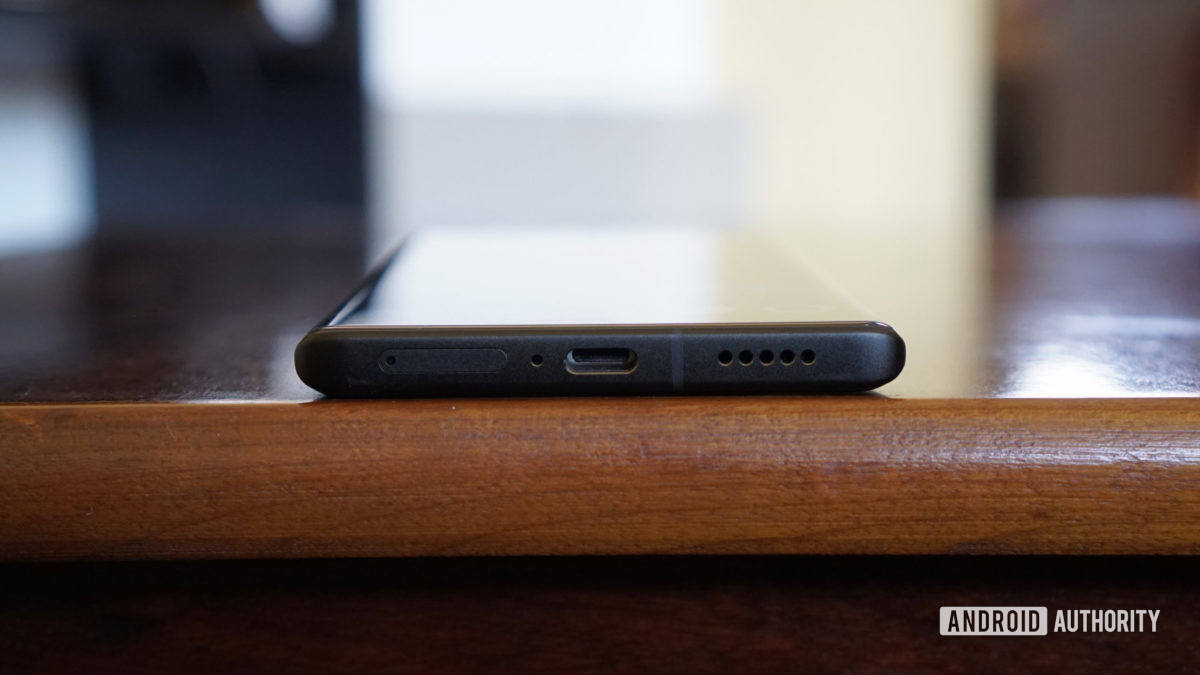
The Vivo X70 Pro Plus packs a 4,500mAh battery into its frame, matching the likes of the Samsung Galaxy S21 Plus, OnePlus 9 Pro, and Sony Xperia 1 III. At QHD+ resolution with the dynamic refresh rate option enabled, I was able to get just under five and a half hours of screen-on time out of the cell.
My usage during this period was somewhat heavy, consisting of about 45 minutes of YouTube Music, 25 minutes of GPS navigation, plenty of photos and videos taken during an afternoon walk, and social media browsing. Another day of decent usage yielded just under five and a half hours of screen-on time as well. This broadly matches the Vivo X60 Pro Plus.
Switching down to FHD+ resolution while keeping the dynamic refresh rate enabled results in much better endurance. I was able to get six hours and 20 minutes of screen-on time (as seen in the fourth image above), with usage consisting of YouTube Music playback for most of the working day, browsing Reddit for almost two hours, playing Genshin Impact for 30 minutes, and some camera usage. This is a pretty significant jump, so those who can’t really tell the difference between FHD+ and QHD+ should stick to FHD+ for the battery benefit.
Related: The Android phones with the best battery life
Vivo offers speedy 55W wired charging, which is a little slower on paper than 65W+ charging solutions from OnePlus, Oppo, and Xiaomi. But a full charge can be accomplished in under 55 minutes, which still bests flagships from the likes of Samsung, Sony, and Google. The charging time is a few minutes slower than its predecessor though, which went from zero to full in about 45 minutes. This isn’t surprising given the slightly larger battery here.
Prefer wireless charging? Vivo has you covered this time, as the X70 Pro Plus brings 50W Qi wireless top-ups to the table. We weren’t able to test wireless speeds but it’s significantly faster on paper than the likes of the Galaxy S21 series while being on par with the OnePlus 9 Pro.
Anything else?
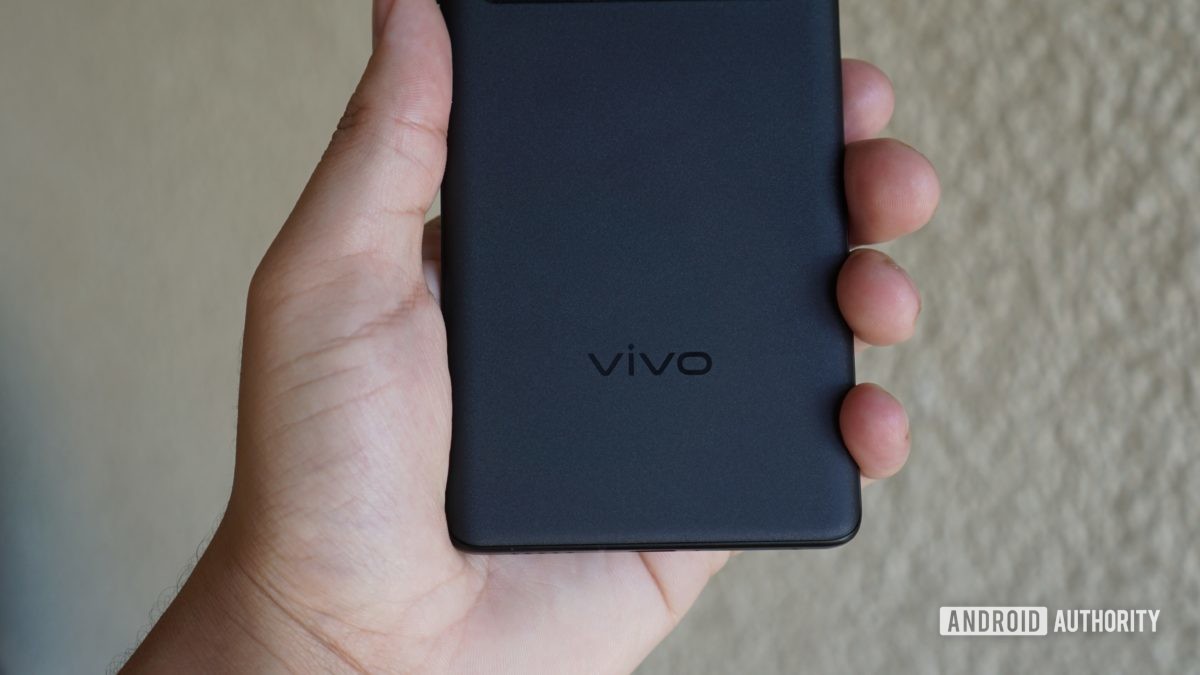
- 120Hz QHD+ display: The X60 Pro Plus had a pretty great FHD+ 120Hz OLED panel. But we’re glad to see Vivo adopt a QHD+ resolution this time, along with Samsung’s latest E5 panel and an adaptive refresh rate from 1Hz to 120Hz. The end result is a sharp, vibrant panel that delivers a great viewing experience indoors and outdoors.
- Stereo speakers: We also get stereo speakers this time, making for a welcome improvement over the previous phone’s mono speaker setup. The bottom-firing speaker is definitely louder than the earpiece-mounted top speaker, but the combo still delivers plenty of volume if you listen to podcasts in the shower like me.
- No mmWave support: Unfortunately for those in the US hoping to import the X70 Pro Plus, the phone lacks support for mmWave bands. This means that you’ll have to make do with sub-6GHz 5G connectivity only. This won’t be a problem for other regions where mmWave isn’t a factor yet, but it does mean the phone isn’t completely future-proofed. It also supports Wi-Fi 6, though not Wi-Fi 6E like many other premium flagships.
- A faster charger in the box: Samsung and Apple may have ditched the charger in the box, but Vivo is bucking this trend. In fact, you’re actually getting a 66W charger despite the fact that the phone tops out at 55W.
Vivo X70 Pro Plus specs
| Vivo X70 Pro Plus | |
|---|---|
| Display | 6.78-inch FHD+ 1,440 x 3,200 AMOLED, HDR10+ 120Hz refresh rate 240Hz touch response In-display fingerprint sensor |
| Processor | Qualcomm Snapdragon 888 Plus Adreno 660 GPU |
| RAM | 12GB |
| Storage | 256GB Non-expandable |
| Battery | 4,500mAh 55W wired charging 50W wireless charging |
| Cameras | Rear: 50MP standard at f/1.57, OIS 48MP Ultra-wide at f/2.2, micro-gimbal 12MP 2x telephoto for portraits at f/1.6 8MP 5x periscope sensor at f/3.4 Video: 8K at 30fps, 4K at 30/60fps, 1080p at 30/60/120/240fps, 720p at 480fps Front: 32MP |
| IP rating | IP68 |
| Headphone jack | N/A |
| Connectivity | NFC Wi-Fi 6 Bluetooth 5.2 Supports SBC, AAC, aptX HD, aptX Adaptive, LDAC codecs |
| Software | Funtouch OS 12 Android 11 |
| Dimensions and weight | 164.54 x 75.21 x 8.99mm 213 grams |
Value and competition
Vivo takes on premium rivals.
The Vivo X70 Pro Plus is definitely a premium flagship when it comes to pricing alone, weighing in at Rs 79,999 (~$1,077). That puts it firmly in the territory of top-end devices from the likes of Apple, OnePlus, Samsung, and Xiaomi.
Fortunately, Vivo brought its A-game to the hardware table this time. It earns the premium price tag by virtue of additions like an IP68 rating, a slick QHD+ 120Hz OLED screen, and 50W wireless charging. All of these were missing from the similarly pricey X60 Pro Plus earlier this year, making the X70 Pro Plus a no-brainer over the earlier flagship.
You’re still getting a really flexible quad rear camera system as well, featuring loads of camera modes. Plus, the micro-gimbal stabilization returns for smoother video clips and better low-light ultra-wide snaps, with none of its rivals having this stabilization feature. Those who want the flagship boxes ticked as well as a great all-round camera experience should add this to their wishlist. The problem for many will be actually buying one due to the limited availability.
The Vivo X70 Pro Plus brings plenty of premium extras that were missing from the X60 Pro Plus
There are great alternatives around though, with the Samsung Galaxy S21 Ultra ($1,199/Rs 105,999) being the most prominent option. It’s available in way more markets, making it the default choice for many consumers. It also offers superior zoom capabilities at 10x or higher thanks to the dedicated 10x camera, while the 5,000mAh battery delivered better endurance in our testing. You do lose out on fast charging as well as the high-resolution ultra-wide camera and micro-gimbal system, but Samsung’s Super Steady video mode is still good in its own right.
Another neat alternative is the Xiaomi Mi 11 Ultra (Rs 69,999), and it could be a better purchase if you’re looking for a bigger battery, faster charging times, and a cheaper price. You don’t get a 2x telephoto camera for short-range zoom, but it brings a 48MP 5x camera for great long-range results. The Xiaomi device also brings a load of premium features to the table, though the lack of a firm update promise is hard to stomach for such an expensive phone.
The OnePlus 9 Pro ($1,069/Rs 64,999) is another cheaper alternative that warrants considering. It has a lot in common with the Vivo flagship, such as battery capacity, 50W wireless charging, high resolution main and ultra-wide cameras, and a similar display. But the X70 Pro Plus has two telephoto cameras versus one seen on the OnePlus device, while the 9 Pro brings faster 65W wired charging.
Finally, the Vivo X70 Pro (Rs 46,990) is also worth a look if you like the idea of the X70 Pro Plus but want something much cheaper. The mid-range device ditches the Snapdragon 888 Plus in favor of a Dimensity 1200 chipset, swaps out the 48MP ultra-wide camera for a 12MP sensor, and brings 44W wired charging only. It also drops from a QHD+ panel to an FHD+ screen and loses out on water resistance. You do get a micro-gimbal system on the 50MP main camera though, as well as a 2x 12MP sensor and a 5x 8MP periscope camera for good zoom shots. This warrants consideration if you want the core X70 Pro Plus camera experience without the premium extras.
Vivo X70 Pro Plus review: The verdict
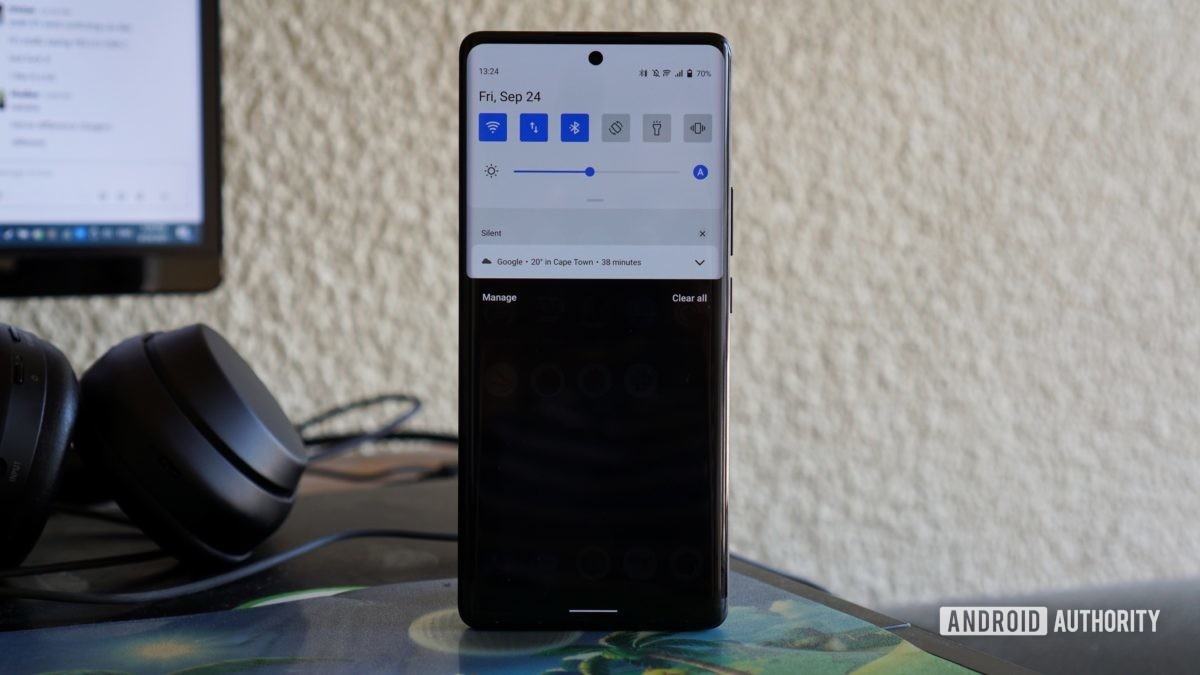
Vivo has finally caught up to the premium competition with the X70 Pro Plus, bringing truly high-end features like wireless charging, water resistance, and a QHD+ 120Hz OLED screen. Throw in an already versatile camera system boosted by the innovative micro-gimbal setup, plenty of horsepower, and decent battery life (at least at FHD+ resolution) and you’ve got a high-end phone that can go toe-to-toe with the best of them.
There are still a fair few areas in need of improvement though. Bloatware is still a major issue with Vivo’s software. The phone itself will also be too large for many people, though that’ll no doubt add to the appeal for those who like big phones. Vivo also continues to offer 60x zoom when even 10x zoom isn’t guaranteed to deliver a respectable result and its 5x camera could do with a detail boost.
The Vivo X70 Pro Plus goes some way towards earning its high price due to its slick design, premium features, and great camera performance.
The phone is also a little more expensive than several similarly equipped rivals. However, perhaps the biggest knock against the X70 Pro Plus is that it’s only available in China and India right now. This is a real shame given the great all-round package it has on its hands. It really feels like this is Vivo’s best premium flagship yet, addressing the numerous weaknesses of its predecessor while still retaining the features that made the earlier release stand out in the first place.